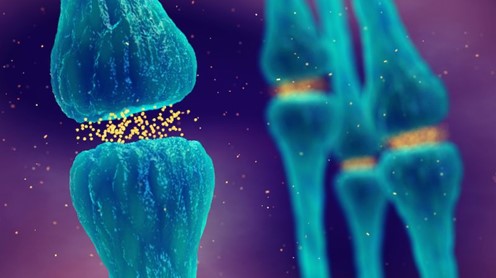Last month we held the 34th International Symposium on ALS/MND in Basel Switzerland. This huge event allows people from across the world to come and find out what research is currently ongoing. Within this 3-day event, we heard from researchers at all stages of their career talk about what projects they have been involved in and the key findings. We have a mixture of talks from plenary speakers who are experts in their field, to early career researchers who are starting out in MND research. This makes the Symposium a great opportunity to connect different generations of researchers and expose those early in their career to the wider MND community. To build on some of the early career researchers, we spoke to Sara Tacconelli and Elise Kellett about how they found presenting their research into toxic proteins at the Symposium.
Sara Tacconelli…
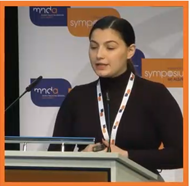
Sara Tacconelli’s research was funded by the MND Association, where she introduces herself and her research project in a previous blog you can read here. She has also spoken at the MND EnCouRage UK event in 2023 which is a great event held for early career researchers in the UK to develop their presentation skills and create new connections with each other. At the Symposium, Sara presented her research findings in front of the global MND community which not only draws attention to her research project but also builds confidence and gets her name known by other researchers in this field. This opens her to have deeper conversations about her research and gives her the ability to make new connections, which is the very purpose of the International Symposium.
Sara presented her PhD research into a protein called FUS, Fused in Sarcoma, which has been linked to an aggressive form of MND. The FUS protein can become toxic in MND and has been linked to the death of motor neurons. This prevents signals from the brain travelling down the neurons to the muscles, so they begin to slowly waste away as they are not used.
FUS is usually expressed in the command center (nucleus) of a cell but in FUS-MND, FUS is found in the wrong part of the cell, known as the cytoplasm. This has knock on effects for how the rest of the cell functions as it can stop other processes from working correctly. Sara’s research looked at the impact of FUS in a region called ‘the synapse’. This is a gap between two neurons that allows them to talk to each other and pass signals to move muscles. The image below shows what a synapse looks like with the dots being signals passed from the blue neuron to the pink neuron.
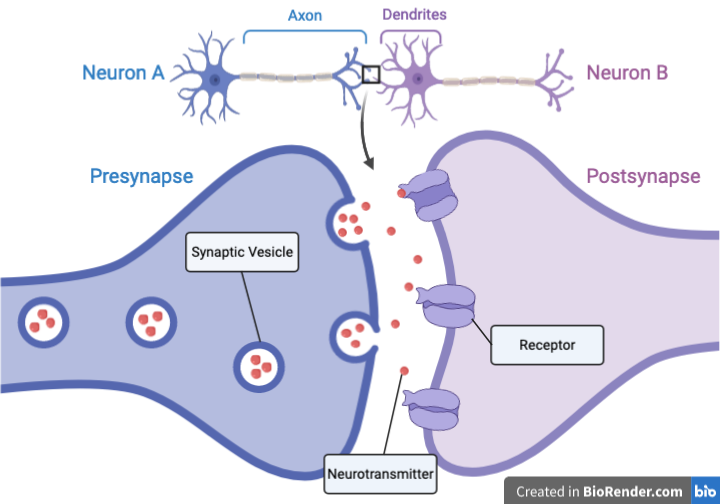
Sara showed for the first time that FUS interacts with special proteins at the synapse. She found a total of 362 proteins interacted with FUS. The disruption in the normal function of these proteins is thought to be linked to the death of motor neurons in MND. For example, toxic FUS can reduce the number of signals which go across the synapse. If not enough signals are passed to the muscle, the muscle stops being used as much, and this can lead to muscle degeneration. FUS has also been linked to proteins which provide synapses with energy. Without energy the synapses and neurons cannot work properly, and nerve cells can start to die.
Now that Sara has discovered what FUS interacts with, identifying how these are altered in disease offers a new target for the development of therapies. The audience was very supportive of Sara’s research and asked some interesting questions about what is next to come from her research and how this could continue within the synapses that connect to muscles. We can’t wait to hear more about Sara’s future research as her career develops.
It was my second time presenting to a big audience but as it was the MND Association I felt really confident on the stage, I really enjoyed it and the questions. Afterwards I felt really empowered and really honored to have had the opportunity to share my research with the international audience.
Sara Tacconelli
Elise Kellett…
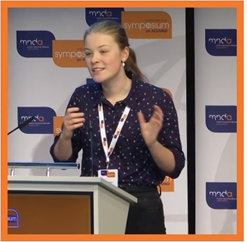
Elise is a PhD student at the Queensland Brain Institute in Australia. This was her first time attending the Symposium and gave a fantastic presentation on her research into the protein, TDP-43, to the MND community.
TDP-43 is normally located in the nucleus of a cell (central hub) but in MND this protein can be found throughout the cytoplasm. Toxic TDP-43 can affect the function of the cell and result in the death of motor neurons, but the reason is not fully understood. Elise has centered her research around a process called ‘phosphorylation’ which can alter the function and activity of proteins. Her aim is to hopefully understand how TDP-43 affects motor neurons and the muscle degeneration we see in MND.
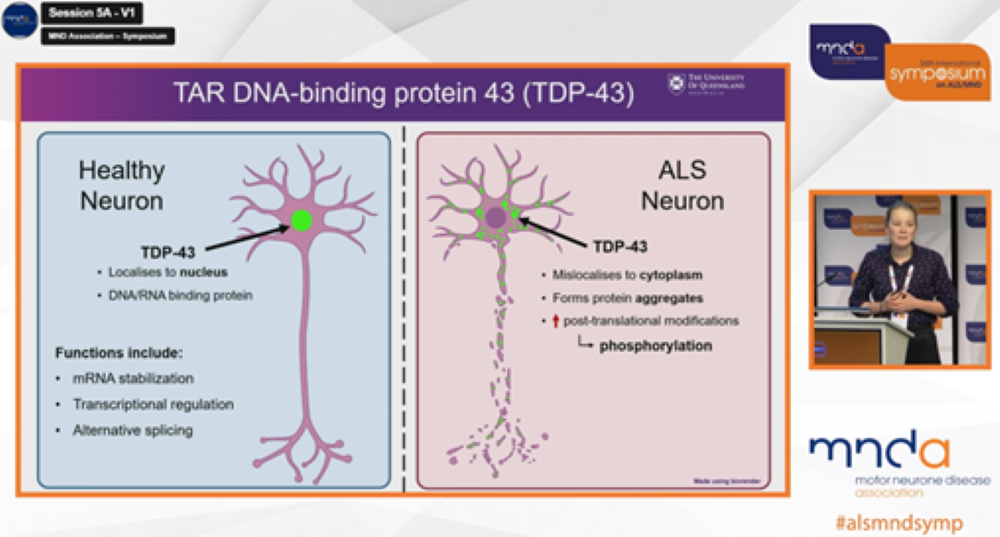
Elise showed the binding region on the TDP-43 protein is blocked by this process of phosphorylation. Most proteins have a binding region where they can join and communicate with other proteins to work, but in MND this process may be blocked. Proteins are vital for all cell functions, any changes can have damaging effects on the cell. The blocking of TDP-43 creates a toxic protein which can affect the function and survival of the neuron.
To find out which proteins are affected by toxic TDP-43, Elise grew motor neurons that were originally from people with MND, ‘in a dish’ in the lab to create a model of the disease. She compared the function of normal motor neurons to the motor neurons with toxic TDP-43 to see which proteins had changed. She found a total of 33 proteins had become more active with toxic TDP-43. These proteins are linked to an increase in cell communication, where it could pass on toxic TDP-43 to neighboring cells. There were also 113 proteins that had reduced activity meaning these proteins don’t work as well as they should. These 113 proteins play an important role in keeping cells healthy and could be one of the reasons why motor neurons die in MND.
Elise’s research was really interesting as it showed how toxic TDP-43 can cause other proteins to stop working potentially resulting in the death of motor neurons. She has started to look into these proteins individually to identify any pathways that are directly affected by toxic TDP-43 and could be a target for future treatments. Elise’s research could help to fill the gaps in the current understanding of toxic TDP-43 and how it relates to cell death.
It’s been very rewarding to share my research and make the long-haul flight worth it! Its fantastic to see all areas, from biomedical to clinical research come together for a common goal
Elise Kellett
It’s encouraging to see the next generation of researchers getting involved in these events and with the MND community. The International Symposium is an excellent place for them to get a wider understanding of MND and start to grow their network of international relationships. We hope to see these connections grow into new projects and the discovery of new and effective treatments for MND. Research across the world would not the possible without the generosity and dedication of the MND community and supporters.

